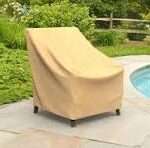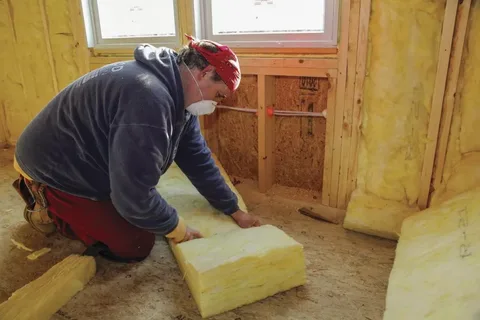When it comes to insulating your home, understanding the performance of your insulation is key to maintaining energy efficiency and comfort. Fiberglass batt insulation is one of the most widely used insulation materials, known for its affordability, ease of installation, and effectiveness. However, to make the most out of this insulation, homeowners need to understand a critical factor: R-value.
In this guide, we will explore what R-value is, how it relates to fiberglass batt insulation, and why it’s essential for keeping your home energy efficient.
What is R-Value?
The R-value of insulation refers to its ability to resist heat flow. In simple terms, it measures how well the insulation prevents heat from passing through it. The higher the R-value, the better the material insulates.
R-values are calculated based on the type of insulation, its thickness, and its density. For fiberglass batt insulation, the R-value can vary significantly depending on these factors. Understanding the R-value is crucial because it directly impacts your home’s energy efficiency, comfort, and energy bills.
How Fiberglass Batt Insulation Works
Fiberglass batt insulation is made up of fine glass fibers that trap air, creating pockets that resist the movement of heat. These batts come in pre-cut sections, making them easy to install in walls, ceilings, and floors. Because fiberglass batt insulation is readily available and cost-effective, it’s a popular choice for many homeowners.
The effectiveness of fiberglass batt insulation is directly related to its R-value. Choosing the correct R-value ensures that your home remains properly insulated, which can help reduce energy costs, regulate indoor temperatures, and improve overall comfort.
R-Values for Fiberglass Batt Insulation
The R-value of fiberglass batt insulation depends on several factors, including its thickness and density. Common R-values for fiberglass batt insulation range from R-11 to R-38, with the following being typical for residential use:
- R-13: Typically used in 2×4 walls, offering adequate insulation for mild climates.
- R-19: Commonly installed in floors and attics where greater insulation is needed.
- R-30: Typically used in ceilings and attics to prevent heat loss in colder climates.
- R-38: One of the highest R-values for residential use, primarily in attics in colder regions.
Factors Affecting the R-Value of Fiberglass Batt Insulation
Several factors can impact the R-value of fiberglass batt insulation, including:
- Thickness: As the thickness of fiberglass batt insulation increases, so does the R-value. Thicker batts provide better thermal resistance.
- Density: Higher-density fiberglass batts have more fibers per square inch, increasing their ability to resist heat flow and raising their R-value.
- Moisture: If fiberglass insulation gets wet, its R-value can decrease significantly. Proper ventilation and vapor barriers can help prevent moisture from affecting the insulation.
- Installation Quality: Even the best insulation won’t perform well if it’s installed improperly. Gaps, compression, or misaligned batts can reduce the insulation’s effectiveness.
Why R-Value is Important for Energy Efficiency
Choosing insulation with the right R-value for your home is essential for maintaining energy efficiency. A well-insulated home helps keep warm air inside during the winter and cool air inside during the summer. This reduces the need for constant heating or cooling, ultimately saving you money on energy bills.
In areas like Beaufort, SC, where summers are hot and winters are mild, fiberglass batt insulation with a moderate R-value is usually sufficient for keeping homes comfortable year-round. However, for homes in more extreme climates or in specific parts of your home like attics or basements, a higher R-value may be necessary to prevent heat loss or gain.
How to Choose the Right R-Value for Your Home
1. Consider Your Climate
One of the most important factors when choosing the right R-value is your local climate. For example, homes in colder climates generally require insulation with a higher R-value to combat heat loss, while homes in warmer climates may need lower R-values to reduce heat gain.
In Beaufort, SC, where summers are humid and winters are relatively mild, fiberglass batt insulation with R-values between R-13 and R-30 should offer adequate protection for walls, floors, and attics. However, areas with colder winter temperatures may benefit from higher R-values in attic insulation.
2. Identify the Area You’re Insulating
Different parts of your home may require different levels of insulation. For example, walls, floors, and ceilings in a home all have different insulation requirements based on their exposure to external temperatures.
- Walls: R-13 or R-15 fiberglass batt insulation is common for exterior walls in mild climates.
- Floors: Insulation with R-19 is often used in floors to prevent heat loss to unheated spaces.
- Attics: Attics require more insulation because heat rises. An R-value of R-30 or higher is ideal for attics, particularly in regions with cold winters.
3. Consult Local Building Codes
Local building codes often dictate the minimum R-value required for insulation in residential properties. Be sure to check your local codes or consult a professional insulation contractor to ensure you’re using the appropriate insulation for your area.
Benefits of Using Fiberglass Batt Insulation
1. Affordability
Fiberglass batt insulation is one of the most cost-effective insulation options available. Its affordability makes it an attractive option for homeowners looking to improve energy efficiency without breaking the bank.
2. Easy Installation
Fiberglass batts are easy to install, particularly for DIY enthusiasts. Pre-cut batts fit snugly between wall studs, joists, and rafters, making the installation process straightforward. However, for maximum effectiveness, professional installation is always recommended to ensure there are no gaps or compression in the insulation.
3. Fire Resistance
Fiberglass insulation is naturally fire-resistant, providing an added layer of safety to your home. It does not burn, which means that in the event of a fire, fiberglass insulation can slow the spread of flames.
4. Sound Absorption
In addition to providing thermal insulation, fiberglass batts also help absorb sound. Installing fiberglass insulation in walls, floors, and ceilings can reduce noise transmission between rooms and from outside.
5. Environmentally Friendly
Fiberglass batt insulation is often made from recycled materials, making it an eco-friendly choice. By choosing fiberglass insulation, you not only improve your home’s energy efficiency but also reduce your environmental impact.
FAQs About Fiberglass Batt Insulation R-Values
1. What R-value do I need for my home?
The R-value you need depends on your climate and the part of your home you’re insulating. Homes in warmer climates may require lower R-values, while colder climates may need higher R-values, especially in attics and ceilings.
2. Can I layer fiberglass batts to increase the R-value?
Yes, you can layer fiberglass batts to achieve a higher R-value. However, it’s essential to ensure proper installation without compressing the batts, as compression can reduce the insulation’s effectiveness.
3. Does fiberglass insulation lose R-value over time?
Fiberglass insulation retains its R-value as long as it remains dry and properly installed. If the insulation becomes wet, its R-value can decrease significantly.
4. Is fiberglass insulation safe?
Fiberglass insulation is safe to use in homes. While fiberglass fibers can cause skin irritation during installation, proper protective gear like gloves and masks can prevent discomfort.
5. How do I know if my insulation needs an upgrade?
If you notice uneven temperatures in your home, higher energy bills, or drafts, it may be time to check your insulation. Upgrading to insulation with a higher R-value can improve energy efficiency.
Conclusion
Understanding the R-value of fiberglass batt insulation is crucial for improving your home’s energy efficiency, comfort, and overall performance. Choosing the right R-value depends on your climate, the area you’re insulating, and local building codes. By selecting the appropriate R-value for your insulation, you can enjoy lower energy bills and a more comfortable living space year-round.
If you’re in Beaufort, SC, or nearby areas like Bluffton, Edisto, Hampton County, Hilton Head, Lady’s Island, or Savannah, and are looking to improve your home’s insulation, contact East Coast Foam at (854) 212-8830 for expert installation services and advice on fiberglass batt insulation.









